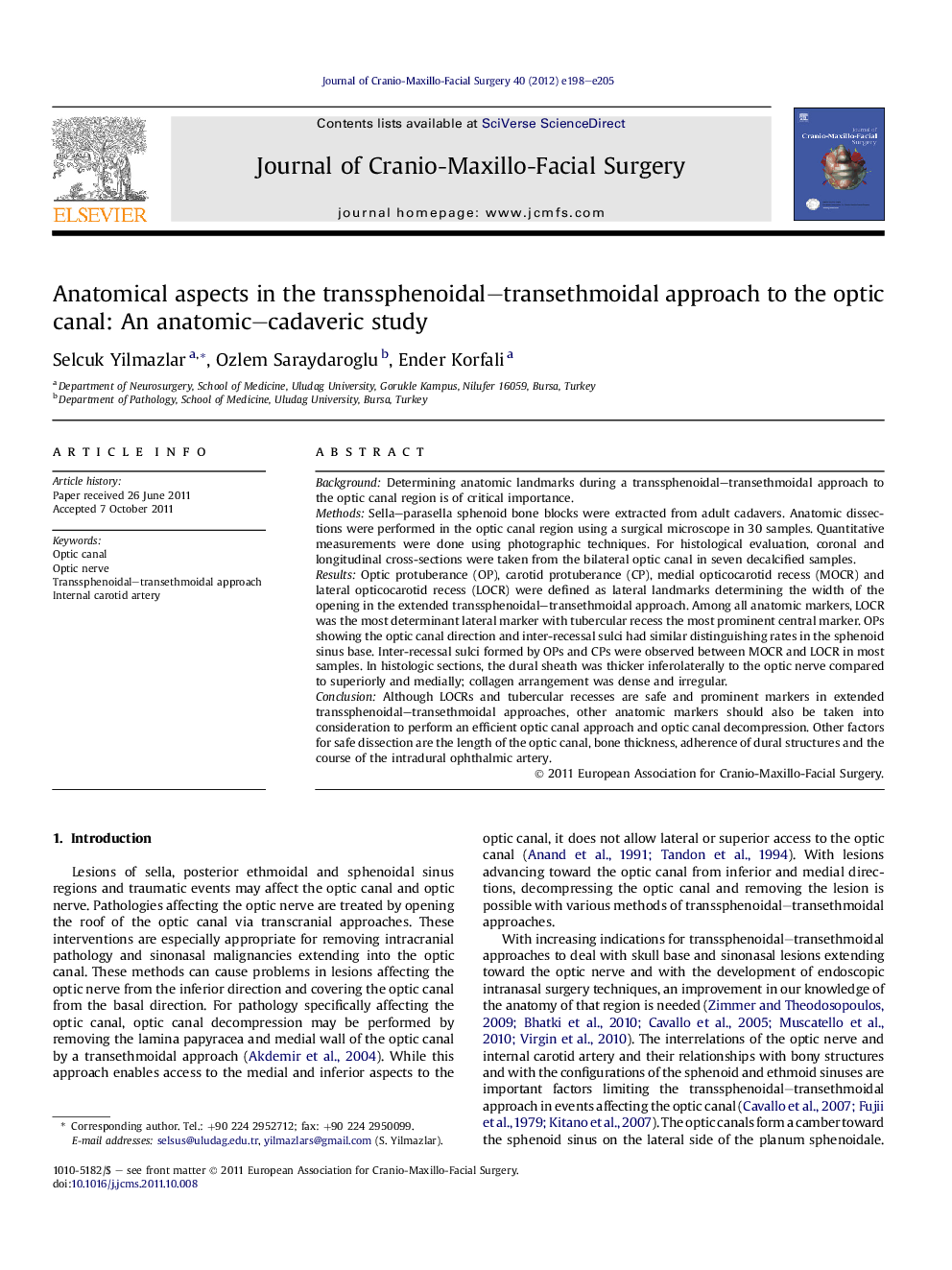| Article ID | Journal | Published Year | Pages | File Type |
|---|---|---|---|---|
| 3143001 | Journal of Cranio-Maxillofacial Surgery | 2012 | 8 Pages |
BackgroundDetermining anatomic landmarks during a transsphenoidal–transethmoidal approach to the optic canal region is of critical importance.MethodsSella–parasella sphenoid bone blocks were extracted from adult cadavers. Anatomic dissections were performed in the optic canal region using a surgical microscope in 30 samples. Quantitative measurements were done using photographic techniques. For histological evaluation, coronal and longitudinal cross-sections were taken from the bilateral optic canal in seven decalcified samples.ResultsOptic protuberance (OP), carotid protuberance (CP), medial opticocarotid recess (MOCR) and lateral opticocarotid recess (LOCR) were defined as lateral landmarks determining the width of the opening in the extended transsphenoidal–transethmoidal approach. Among all anatomic markers, LOCR was the most determinant lateral marker with tubercular recess the most prominent central marker. OPs showing the optic canal direction and inter-recessal sulci had similar distinguishing rates in the sphenoid sinus base. Inter-recessal sulci formed by OPs and CPs were observed between MOCR and LOCR in most samples. In histologic sections, the dural sheath was thicker inferolaterally to the optic nerve compared to superiorly and medially; collagen arrangement was dense and irregular.ConclusionAlthough LOCRs and tubercular recesses are safe and prominent markers in extended transsphenoidal–transethmoidal approaches, other anatomic markers should also be taken into consideration to perform an efficient optic canal approach and optic canal decompression. Other factors for safe dissection are the length of the optic canal, bone thickness, adherence of dural structures and the course of the intradural ophthalmic artery.
